Wildlife Sightings - October 2017
Weather determines the variety of many wildlife sightings and is constantly checked by naturalists in anticipation of what may be just around the corner. It’s amazing how two autumns can be so different. Autumn 2016 saw high pressure across Siberia and lots of easterly drift. This autumn there was barely a breath of wind from the east. Instead we experienced strong south to westerly winds originating from large Atlantic storms accompanied by mild temperatures. These conditions once again dominated proceedings in October. Birders had to wait until the 18th before the first easterly. This lasted barely two days then it was back to a westerly airstream for the remainder of the month. Temperatures were in the mid-teens for most of the month. It never really felt cold until the last few days when a touch of north in the wind reduced temperatures to below 10°.
A scattering of scarce bird migrants were seen on the coast on the 1st all remnants from the end of September. Rose-coloured Starling in Easington, Red-breasted Flycatcher and Red-backed Shrike in Kilnsea and seven Yellow-browed Warblers in the same area. Two Yellow-browed Warblers were also seen at Bempton. On the same day Little Stints were seen at six sites across North and East Yorkshire including four and a Red Knot at Nosterfield Quarry. The 3rd brought the first big Pink-footed Goose migration of the autumn and the first few Whooper Swans. The biggest count by far was made in the Filey Bird Observatory area (Reighton Sands and Hunmanby Gap) with 5,158 counted moving south. 1450 flew south at Flamborough, and a remarkably similar 1444 were logged south at Spurn. The Filey count represents more than 1% of the world population! Four Whooper Swans also joined the movement here. A Barred Warbler near the Wassand bird hide at Hornsea Mere was a good find on the 3rd.
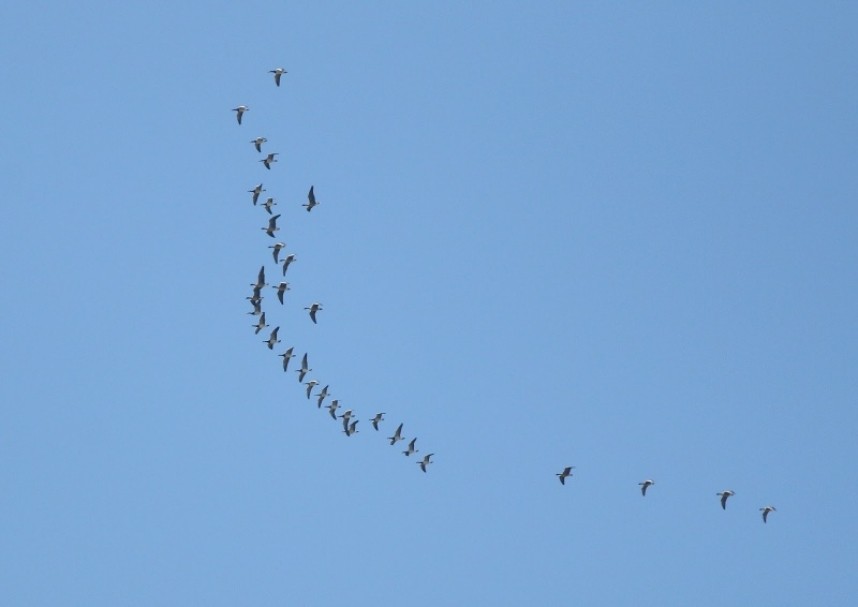
Pink-footed and Barnacle Geese over Filey © Mark Pearson
Songbirds were still fighting their way across the North Sea battling the westerly head wind. Considering how tiny they are it still seems incredible Goldcrests can make it in the face of such conditions. On the 4th 442 were logged at Spurn! A touch of north in the wind on the 5th brought a small Skua passage to Spurn including a Pomarine Skua and a Slavonian Grebe arrived at Beacon Ponds. On the 6th, the same weather system brought a European Storm-petrel, two Little Auks (the first of the autumn), 13 Sooty Shearwater and a Long-tailed Skua to Flamborough. More of a surprise was a European Nightjar seen at Spurn on the 6th. Filey, not to be out done, logged a Long-tailed Skua on the 6th and the only Grey Phalarope of the month on the 7th. At Flamborough on the same day a Cettis Warbler was found at Thornwick Pools representing only the second ever record for the Observatory.
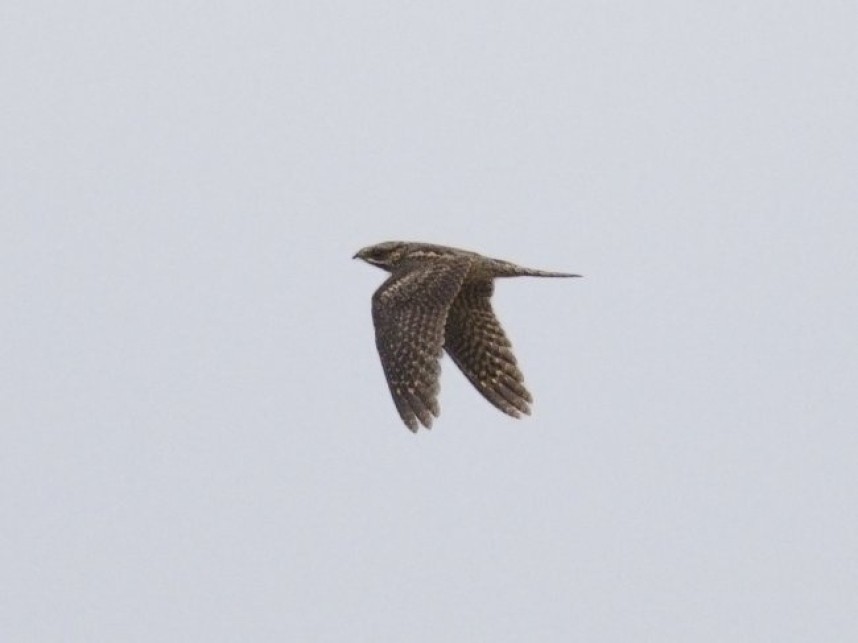
European Nightjar Spurn © Tim Jones
The Co Coast/YNU bioblitz on the 8th was held at South Landing Flamborough. A fantastic range of species were found on the beach include a monster Common Prawn. They don’t usually grow this large!
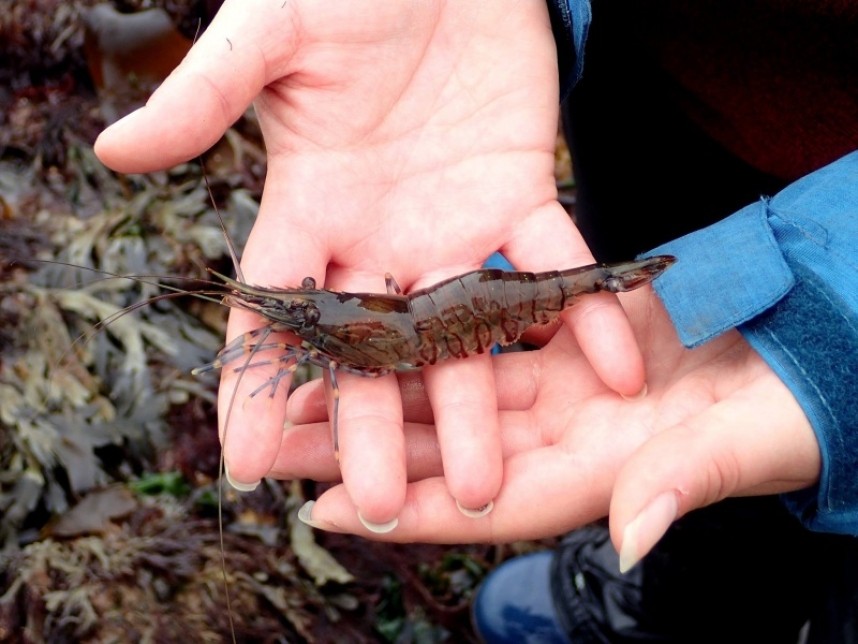
Common Prawn Flamborough © Paula Lightfoot
A very light northerly wind on the 8th did the trick at Flamborough. An impressive 33 Yellow-browed Warblers, three Red-breasted Flycatchers, Richard Pipit and a Hawfinch were seen alongside Black Guillemot, Jack Snipe and three Great Northern Divers. Spurn hosted the fourth Arctic Warbler of the autumn, Olive-backed Pipit, 26 Yellow-browed Warbler, Great Grey Shrike and a possible Parrott Crossbill. It was also the first significant Redwing count of the autumn here with 1355 logged. Nine Bearded Tits appeared a day later in the Spurn area. Whilst nothing like the numbers seen elsewhere there was a good run of Hawfinch records at Flamborough with two more on the 9th and another on the 10th. Filey logged one on the 9th. A late Wood Sandpiper was seen at Willerby and Derringham Flood Alleviation Scheme on the 10th. The first Great Grey Shrike to be seen back in the traditional wintering area of the North Yorkshire Forest was found at Bridestones on the 13th. Whilst there were several Great-white Egret roaming inland sites during the month, they are still a rare bird on the coast. One migrating south at Flamborough, landing briefly in a stubble field on the 13th was only the seventh record for the Bird Observatory. Tree Sparrow migration was well under way by the middle of the month with an impressive 1260 logged at Spurn on the 14th. A Siberian Chiffchaff was a good find at Filey on the 16th considering the lack of Siberian weather! On the 17th a Leaches Storm-petrel flew south at Flamborough in the strong westerly winds.
Migrant moths were being caught in good numbers this month, no doubt helped by the warm south – westerly airflow. Two date periods stand out as particularly productive; the 15th/16th and the 20th/ 21st. A Scarce Bordered Straw was caught overnight at Kilnsea on the 15th. On the same night at the other end of the county, the Scarborough moth team had a bumper catch on Wyekham Causeway. A Water Carpet was several months outside of its normal flight period and a massive 57 Large Wainscot were caught, an excellent haul for this late autumn species. A day later the moth team at Top Hill Low Yorkshire Water Nature Reserve near Driffield caught 38 Large Wainscot.
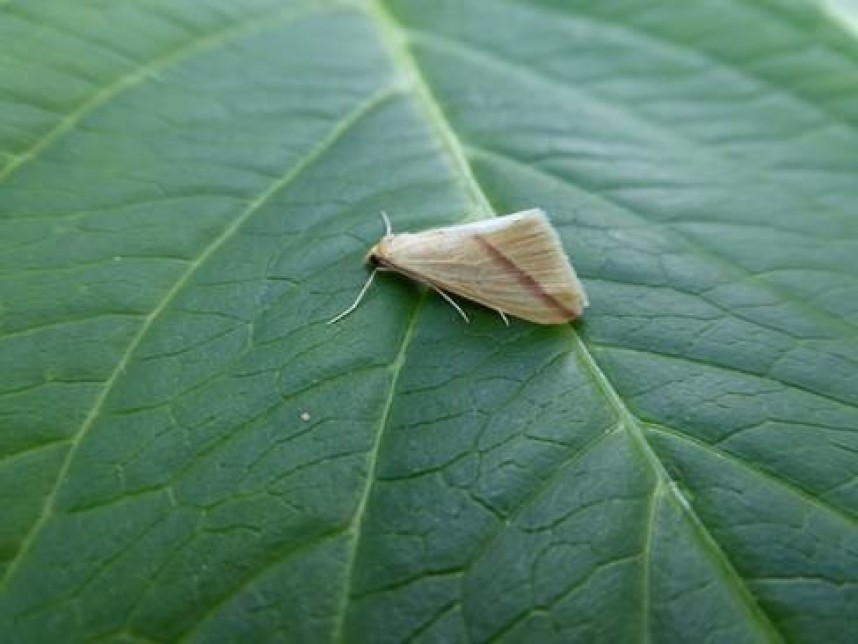
Vestal Wykeham Causeway © Allan Rodda
A new moth for Yorkshire, the rare micro Antigastra catalaunalis was caught at Muston on the 21st. With such a large species list in Yorkshire, it’s increasingly difficult to win this trophy! It proved to be an excellent month for the rare migrant moth Vestal with small numbers caught in many areas of Yorkshire. One was caught by the Scarborough moth team at Wyekham on the 20th. A day later at Top Hill Low a Vestal was the 34,000th moth to be caught here in 2017 and a December Moth on the 28th was the 511th species at the site in 2017. On the same night a Red Sword-grass was only the 2nd record for the reserve. Butterflies this month were dominated by Red Admirals. Daily sightings in many places indicated good numbers reaching our shores and/or late emerging in the UK.
Whilst most naturalists’ attention was being turned to the skies in search of migrant birds a giant was lurking in the sea off Whitby in the form of a Leatherback Turtle seen from a fishing boat! The Leatherback is the world’s largest Turtle and a very rare sight in the North Sea. The only report of a Minke Whale was from Flamborough on the 7th and 18th although this may have been the animal which was then unfortunately found dead below the cliffs there a few days later.
After no sign of any real tail winds to help our millions of thrushes returning for a winter in the west of Europe, an easterly wind for two days on the 18th opened the Turdus flood gates! A morning of low cloud and drizzle a day later produced a proper east coast fall. Redwings arrived in their thousands with 12,000 estimated at Spurn! Also at Spurn un the 19th was a new Olive-backed Pipit, two Little Bunting, Shore Lark, Water Pipit, 20 Ring Ouzel and three Hawfinch. In complete contrast to Redwing, the first Fieldfares didn’t arrive until the next day at Spurn with 59 on the 20th alongside a count of 3,000 Common Starling coming in-off the sea. The only Raddes Warbler of the month was an excellent find at Bempton on the 18th and the only Pallas’s Warbler of the month was found on Filey Brigg on the 20th.
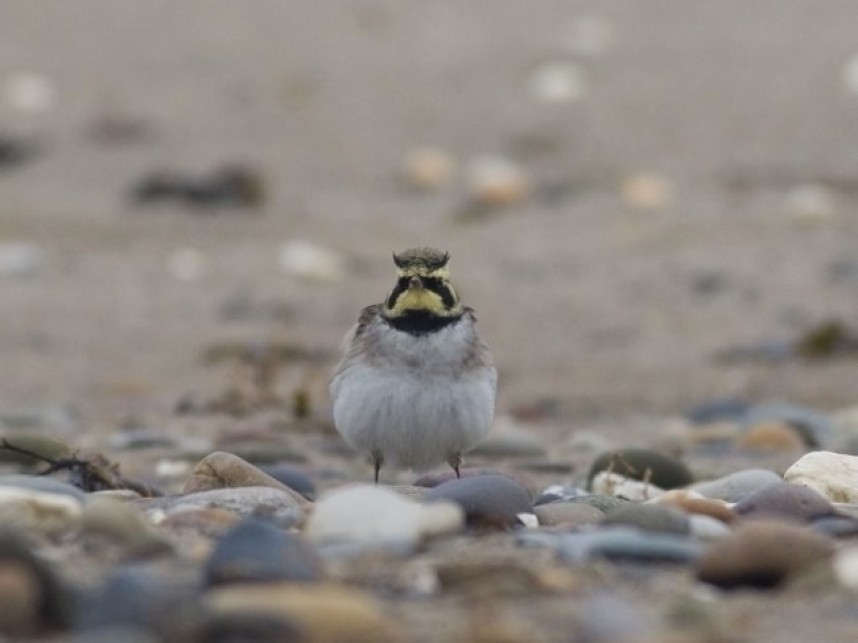
Shorelark Spurn © Tim Jones
A Pallid Swift was photographed at Easington on the 20th and a White-rumped Sandpipier was a good find at nearby Kilnsea Wetlands. By far the rarest bird of the month was again at Spurn. A Cliff Swallow flew south in front of three lucky birders on the 22nd. Up the coast at Flamborough, a Pallid Swift came in off the sea at The Bay Brambles on the 22nd. What may have been the same bird was then seen in the Filey area on the 24th and combined with three Hawfinches, 24 Whooper Swan and hundreds of thrushes created one of the best ever visual migration mornings for birders at Hunmanby Gap. The only Iceland Gull seen in Yorkshire this autumn was a surprise (considering the lack of suitable weather) at Hunmanby on the 22nd. Twite numbers were increasing in the Spurn area during this period with an excellent 72 logged on the 23rd.
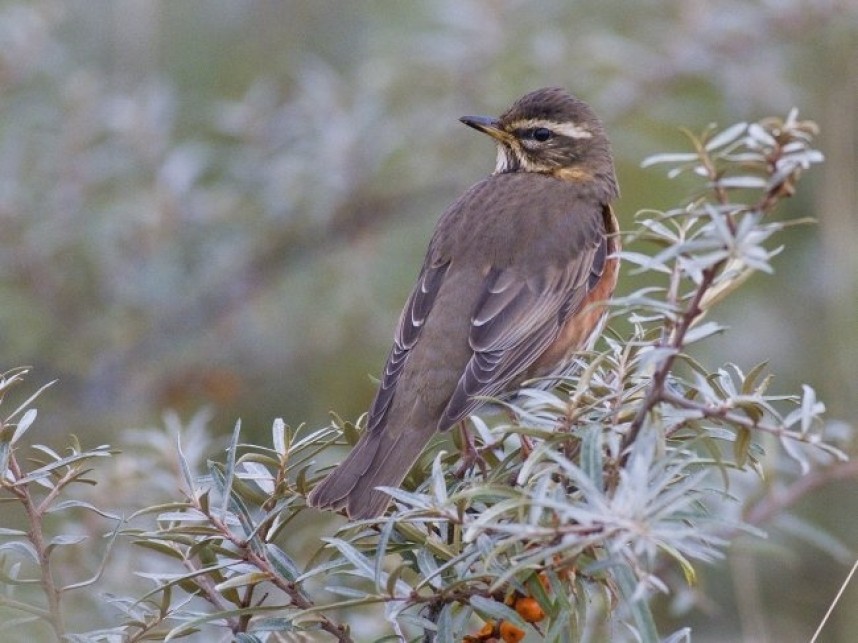
Redwing Spurn © Tim Jones
So back to what was undoubtedly the bird of the month, the Hawfinch. Whilst small numbers were seen in many places this month, Skelton Woods scored by far the biggest result over a two week period with birds present on most days. The first were two found on the 16th but the greatest surprise occurred on the 23rd when an amazing flock of 55-60 flew over! A minimum of 68 different birds were thought to be involved over an eleven day period in the Skelton area, by far the biggest numbers seen in the whole of Yorkshire for a very long time. On the same day as the big Hawfinch flock, a Firecrest at Staithes was a good find in what has been a very quiet autumn for this species. A memorable month for ‘vis-mig’ watchers at Hunmaby Gap was capped off with a Great Grey Shrike flying north through a garden there on the 27th. Down at Spurn on the same day the first Waxwing in Yorkshire this winter flew north and what was thought to be the same long staying Eurasian Bittern was seen again in the Beacon Ponds area.
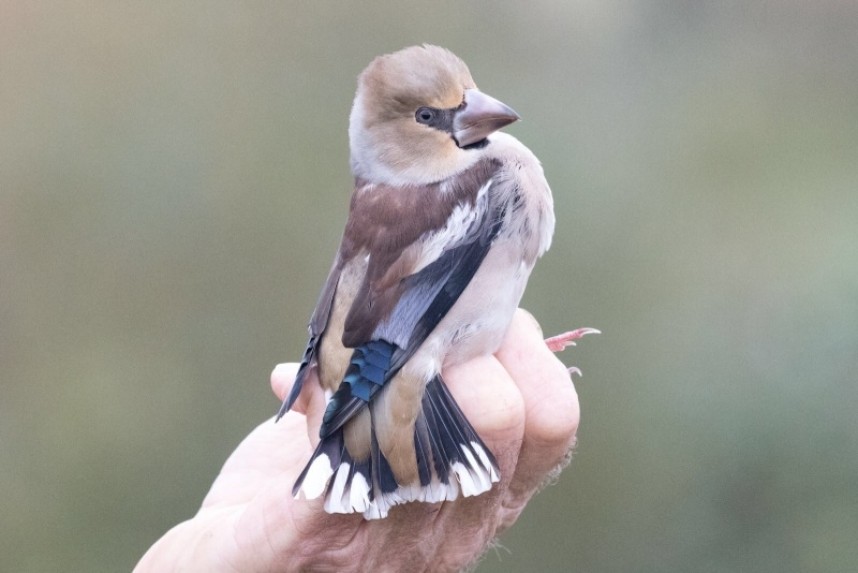
Hawfinch Flamborough © Jo Hood
Attention was then focused on the Cloughton area where a very late Spotted Flycatcher was relocated on the 28th. Features were scrutinised with thoughts of a possible first record of one of the southern European races. DNA results may show the truth after a faeces sample was collected at the site, how birding has changed! The fantastic science of DNA has already proved a positive result this autumn as a Lesser Whitethroat caught and ringed at Filey on the 26th September was proved from DNA to be from the rare ‘Siberian’ race Blythi. Bearded Tit is a rare bird in the Scarborough area so up to two in the outdoor theatre area on the 28th and 29th proved popular with local birders.
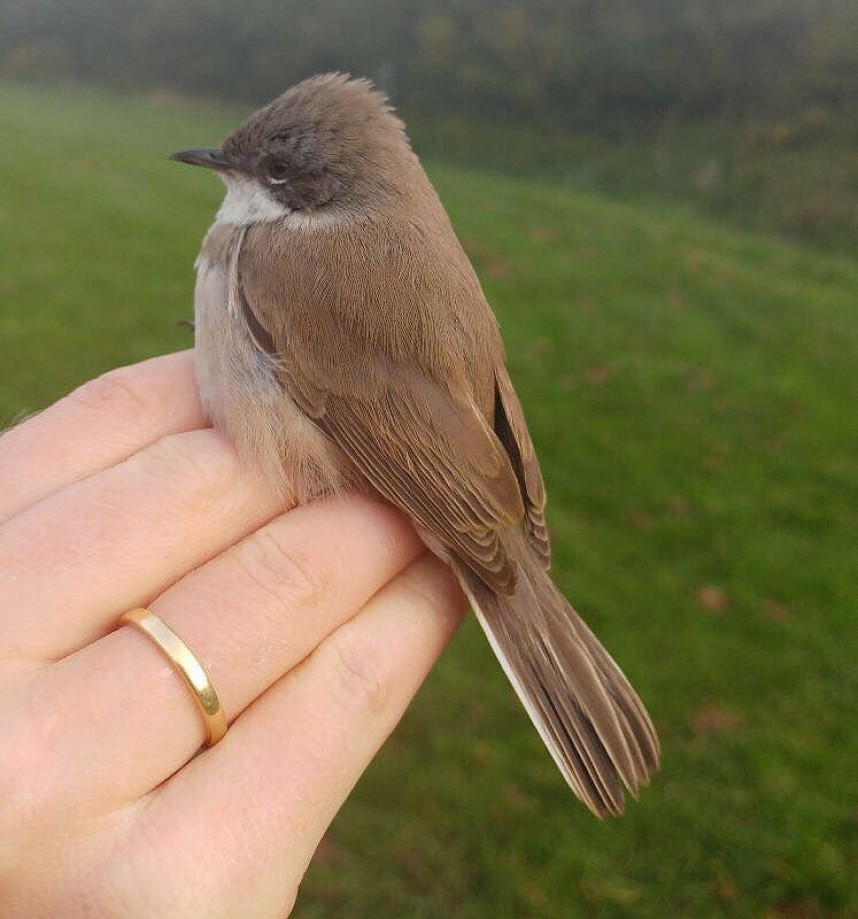
'Siberian' Lesser Whitethroat Filey Sept 2017 © Dan Lombard
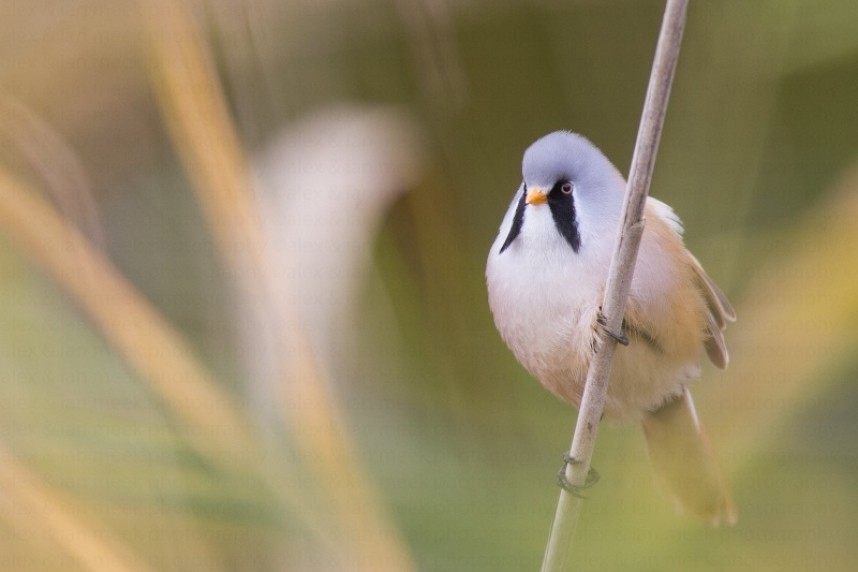
Bearded Tit at Scarborough © Alex Meek
The month ended with a brief day of northerly winds on the 29th which proved to be all that was needed to bring a surge in Auk numbers in the south of the county. 8366 were logged at Spurn on one of its best sea watching days of the year along with a great variety of other species including; Leaches Storm-petrel, 2 European Storm-petrel, Balearic Shearwater, Pomarine Skua and 32 Little Auk. Bizarrely very few Little Auks or any other Auks were seen north of Spurn on the same day. Nine Bean Geese (undetermined species) flew south at Long Nab on the 29th and a late Whimbrel was on the shore under the seawatching hut.
A Black-bellied Dipper found at Spurn on the 30th was only the third record of this species within the Observatory area. On the same day a Richards Pipit was another great bird added to the Hunmanby ‘vis-mig’ list from an early morning watch on the 30th. The last day of the month provided another opportunity for birders to see Little Auks on the coast with four past Flamborough alongside a Long-tailed Skua and Black-throated Diver.
Richard Baines YCN
Many thanks to all the observers who contributed sightings and photographs. This article covers North and East Yorkshire. For more wildlife sightings visit these great local, regional and national web sites
Spurn Bird Observatory, Flamborough Bird Observatory, Filey Bird Observatory and Group, Northern Rustic blogspot , Yorkshire Naturalists Union, Yorkshire Wildlife Trust, Scarborough Birders, Butterfly Conservation Yorkshire Branch Yorkshire Nature Traingle For National News: Birdguides



 Back to Blog
Back to Blog
